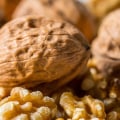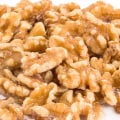All walnut trees produce walnuts, but the amount of nuts produced will depend on the climate and the nutrients available. Walnut trees are capable of producing nuts every year, but you may experience patterns of high and low yields from year to year. Like many trees that produce nuts and fruits, walnut trees are prone to a reproductive pattern known as alternate bearing. This is characterized by alternating years of high crop yields followed by light or absent nut production.
So, while you're likely to see some nuts every year on your walnut tree, expect the amount of harvest to vary. Black walnut trees will produce large harvests of edible nuts for free. There are different ways to process or remove peels. But black walnuts are nutritious and can be used in a variety of foods or eaten on their own.
The name drift walnut is a corruption of the French Gaul nut and is native to Asia Minor and southeastern Europe. Most are grown for their beauty, wood, and some for their edible nuts. Walnuts produce male and female flowers on the same tree that open at different times; due to their compensated flowering cycles, trees must be cross-pollinated. The flowers are green, with males growing in long catkins and the females form small clusters.
Walnut leaves are one to two feet long, pinnate and formed from 2 to 4 ovoid spear-shaped leaflets. Walnuts usually have a diameter of 2 to 3 and are surrounded by a fleshy, greenish shell during the summer; in autumn, they ripen and fall from trees. Most people associate walnut trees with the delicious nuts they produce. Botanically speaking, the fruit of the walnut tree is not really a nut but a drupe.
Walnut is actually the seed of the walnut fruit. The nut fruit has a fleshy green outer shell that surrounds a hard shell that contains the seed (which we call the nut). A whole nut resembles the appearance of a brain. Black walnut (Juglans nigra) from eastern North America and English or Persian walnut (J.
Regia), native to Iran, are valuable timber trees that produce edible nuts. Cinerea) in eastern North America also produces an edible nut-like seed. The average walnut tree starts producing nuts at the age of 8-10. However, there are cases where walnut trees begin to produce between 15 and 22 pounds. Most commercial walnut orchards reach their peak production level at an age of 30 years or older.
Healthy, mature walnut trees produce 66 to 350 pounds. The tree has an inherent tendency to alternate bearing and generally produces good production every two years. They are defined as single-seed nuts that have a high oil content. They are usually enclosed in a solid or leathery outer layer.
In botanical terms, walnuts are strictly a particular type of dried fruit that has a single seed, a hard shell, and a protective shell. Chestnuts, hazelnuts, pecans and walnuts fit the true definition of a nut. Peanuts and almonds don't meet the botanical definition of a true nut. Peanuts are actually legumes and a fleshy plum-like coat surrounds almonds.
Whether they are real “nuts” or not, people all over the world enjoy these fruits. Fast-growing tall walnut trees are sometimes grown as ornamental trees because their fruits are small and difficult to extract. When surrounded by other trees in the forest, black walnuts grow straight and tall with few, if any, lower branches,. In most countries, farmers harvest by hand, shaking branches so that walnuts can fall into special harvesting nets that have been placed in the ground.
Walnut trees (Juglans spp) are deciduous trees belonging to the walnut family (Juglandaceae), which includes walnut trees (Carya). Walnut trees produce nuts during a two-year process, in which the flowers produced in a given year do not ripen to become nuts until the following year. Nut shells contain phenols, chemical compounds that can not only stain hands, but for some people cause skin irritation, so when handling walnuts, wear rubber gloves. You can see black walnut trees because the plants don't grow within 15 to 24 m (50 to 80 ft) radius around the tree.
According to Pennsylvania State University, the walnut tree nut is enclosed in a fleshy green drupe that is the fruit of the tree. I take the nuts from each fall to the National Forest and find an unoccupied gophone hole to drop one and step on the hole to make the earth accumulate the nut for the winter. Male and female reproductive organs are found in different flower clusters without petals, known as catkins, on the same tree. Manchurian nuts are cold-resistant in zones 2 to 8 and can withstand temperatures as low as -45°C (-49°F).
For black walnut trees that grow outdoors or in gardening applications, seeds can begin to be produced between 4 and 6 years of age. Comparing the three common walnut species, the chestnut tree (white walnut) has oblong and lanceolate leaves. The main drawback of black walnut trees in a yard or sidewalk is falling nuts, which can be a trip hazard and make a mess. .
.


